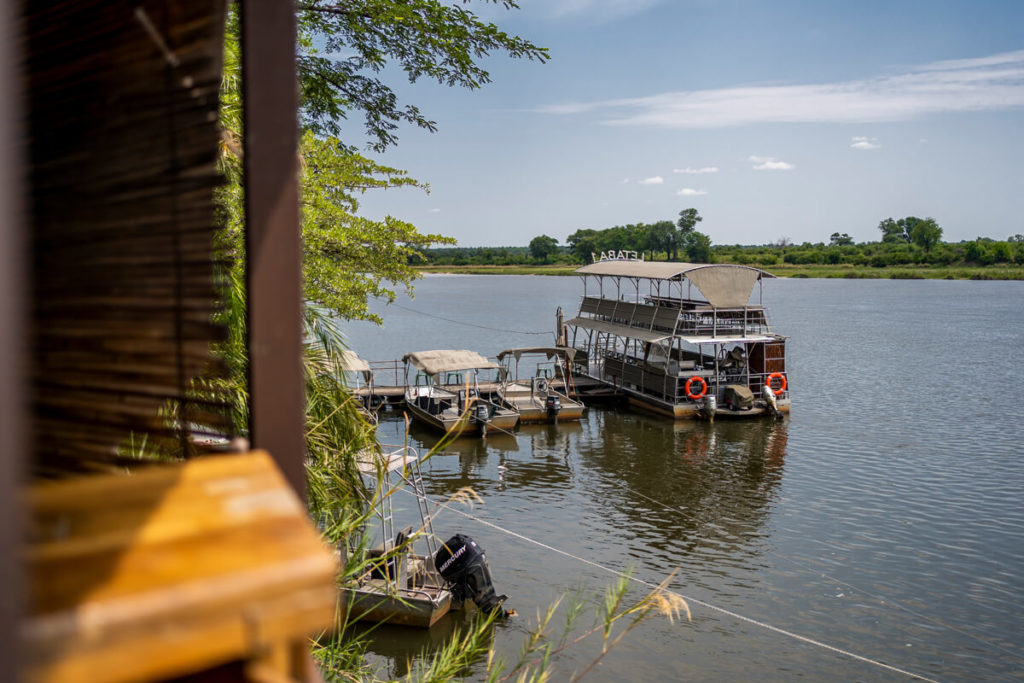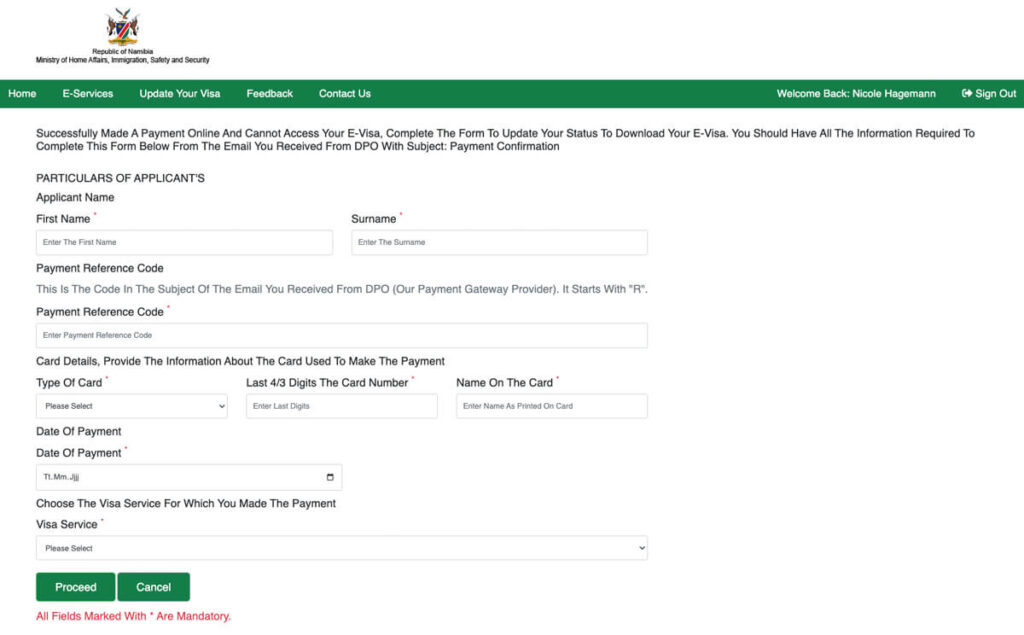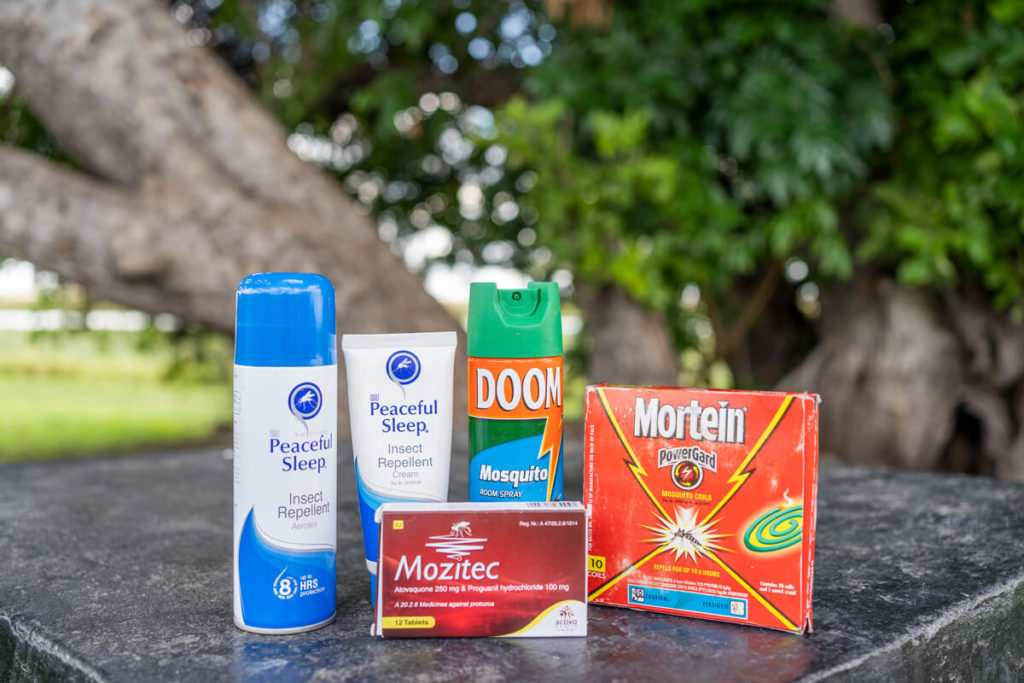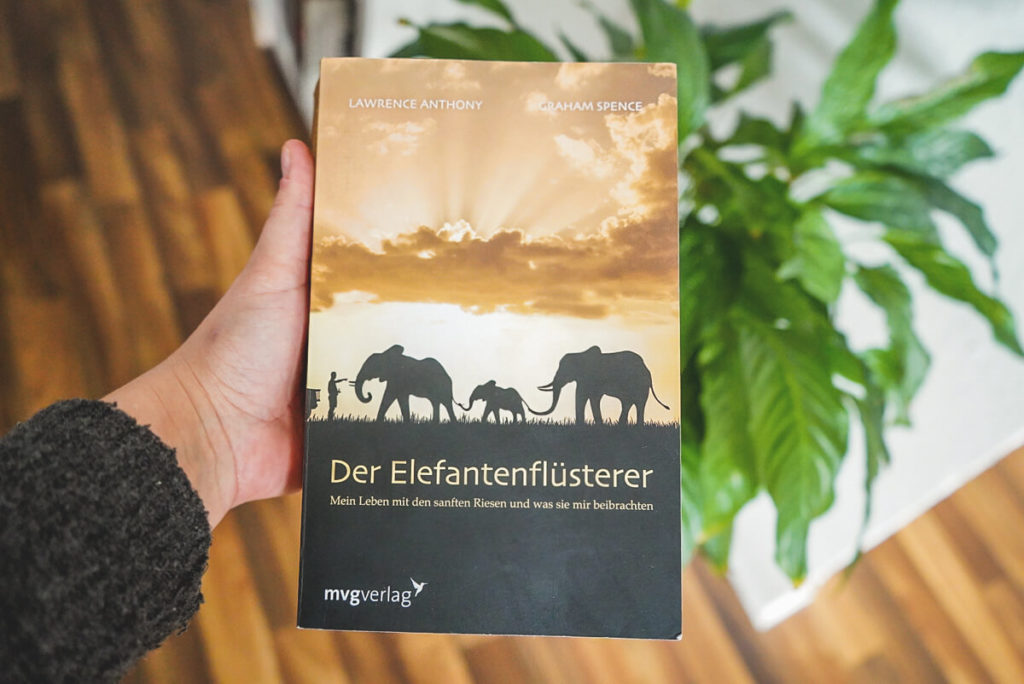If you want to travel to Namibia, you absolutely need a Namibian visa as of April 1, 2025. Without a valid Namibian visa, you won’t be able to board a plane or enter the country—the days of free entry are over. To ensure your trip runs smoothly, you’ll find all the important information about the Namibian visa, the current entry requirements, health tips, and practical information for your trip here. Enjoy browsing!
- Namibia Visa and Entry Requirements
- Applying for a Namibia Visa
- Visa Fees for the Namibia Visa
- Return and Onward Travel Tickets
- Embassies and Consulates in Germany
- Import and Customs
- Medical Care
- Health Regulations
- International Health Insurance
- Travel Reading for Namibia
Namibia Visa and Entry Requirements
To enter Namibia, you need a valid visa since April 1, 2025, which you must apply for before your trip. You should definitely keep an eye on your passport: It must be valid for at least six months upon entry and should have at least three blank pages for stamps.
Additionally, the authorities may request proof of your return or onward flight ticket upon entry. Even if this check doesn’t always happen, you should play it safe and have your booking confirmation handy. In some cases, you may also be required to provide proof of sufficient financial resources – a recent bank statement or credit card is usually sufficient.
Your visa is valid for a maximum of 90 days after it is issued and generally entitles you to multiple entries. If you apply for your visa online in advance, its validity will depend on your stated departure date.
You will need the following documents for entry into Namibia:
- Printed copy of your e-visa (if applicable)
- Passport (valid for at least 6 months upon entry, with at least 3 blank pages)
- Return or onward ticket
- Proof of health or travel insurance (in English)
- Hotel booking(s) and a copy of your itinerary or travel plans
- Proof of sufficient financial resources for your stay
- If you are traveling with child(ren): full birth certificate and written parental consent
- Proof of yellow fever vaccination (only required if you are entering from a yellow fever area)
You are traveling with Child(ren)?
If you are traveling with children, additional regulations apply: Minors require an international birth certificate. You may also be required to provide a notarized consent form from the non-traveling parent(s) and copies of the parents’ passports. These regulations are strict and taken seriously in Namibia – so it’s best to have all the necessary documents with you from the start.

Apply for a Namibia visa
You can either apply for your visa online before your departure via the official eVisa portal, collect it upon arrival at an international airport or border crossing – or apply in person at the Namibian Embassy in Berlin.
Applying in advance is recommended because it saves you time and stress – especially when border crossings are very busy. You can also be sure that you have all the necessary documents together and won’t experience any nasty surprises.
1. Apply for a Namibia visa online
If you want to apply for your Namibia visa in advance, which is recommended, you can do so via Namibia’s new official eVisa portal. The entire application process is online and straightforward – however, you should allow enough time in case documents are missing or queries arise.
When applying, you enter your personal information, upload some documents, and pay the fee directly online. After processing, you will receive your approved visa by email. You must print this document and present it along with your passport upon entry into Namibia.
How to apply for a Namibia visa step by step (online):
- Go to Namibia’s official eVisa portal.
- Register there.
- You will receive an email a few minutes later to verify your email address.
- Log in with your login details.
- Select “New Visa On Arrival Application”.
- Enter your personal information from your passport.
- Answer “Yes” to the question “Will you have money on arrival in Namibia?” and enter the amount in the next window (at least 10,000 NAD).
- Answer the question “Will you be in possession of an onward/return ticket?” also with “Yes” and enter your airline’s ticket number.
- Enter all addresses and telephone numbers of your places of stay.
- Scan and upload your passport (file size: 300 KB to 2 MB).
- Confirm the declaration below (“Tick To Confirm The Declaration”) and click “Proceed”.
- Go to “Track and Pay Your Visa on Arrival Application”.
- Click on the small blue icon on the far right of the table.
- Pay for your visa by credit card on the next page.
- You will receive confirmation that your visa has been approved.
- Your visa will be sent to you as a PDF file via email.
- Print your visa – done!
Important: Without the printed eVisa document and the corresponding A passport (valid for at least six months) won’t get you anywhere upon entry. So, it’s best to take care of it in good time!

2. Namibia visa upon entry (“on arrival”)
If you didn’t apply for your visa online before departure, you can still get it on arrival. You can only obtain a visa on arrival at major entry points: Hosea Kutako International Airport (Windhoek), Walvis Bay International Airport, Walvis Bay Harbour, Ariamsvlei, Impalila, Katima Mulilo, Mohembo, Ngoma, Noordoewer, Oshikango, Oranjemund, and the Trans-Kalahari Border Posts.
You must have all the necessary documents with you: a valid passport, return or onward flight ticket, and proof of booking (accommodation, travel documents). Important: These regulations are subject to change at any time. Applying for your Namibia visa online in advance gives you more security and makes planning easier.
Processing on site can take quite a while depending on demand. Expect waiting times, especially if there are multiple incoming flights. The visa fee is paid directly on site, usually in cash (Namibian dollars or US dollars).
Even though a visa on entry is generally possible, it is still recommended to apply for the visa online in advance. This saves you waiting time, stress, and ensures faster entry – especially after a long flight.
How to apply for a Namibia visa step by step (upon entry):
- Fill out the application form (you can get it either on the plane or at the counter upon arrival).
- Submit the completed form along with the required documents to the immigration officer.
- Pay the visa fee on site.
- You will receive your visa immediately – often with a confirmation email.
Visa Fees for a Namibia Visa
The cost of a Namibia visa varies depending on your country of origin:
Travelers from African countries
- Fee: 1,200 NAD (approx. 56 €)
- Children aged 6-11 pay 600 NAD (approx. 28 €)
- Children under 6 years are exempt from fees
Travellers from non-African countries
- Fee: 1,600 NAD (approx. 75 €)
- Children aged 6-11 pay 800 NAD (approx. 38 €)
- Children under 6 years are exempt from fees
Note for cruise ships: Cruise ship passengers must pay a fee of 300 NAD per day for all port arrivals in the ports of Lüderitz and Walvis Bay.
Return and onward travel tickets
Generally, your Namibia visa may require the presentation of a Return or onward travel tickets as well as a booking confirmation for your accommodation may be required. However, no one wanted to see any of these here (not even in Botswana and South Africa). According to the Ministry of Home Affairs in Namibia, you must be able to provide proof of your exit.
Some airlines even check this at check-in. If you don’t have proof, you may be denied boarding. The authorities may also ask for a ticket upon entry. Without proof, you risk being denied entry.
Don’t have a return or onward ticket yet? Here are a few tips:
- Onward Ticket: There are service providers who will issue you a valid onward ticket for a small fee. Official and perfect for showing (e.g., Onward Ticket or DummyTicket247).
- Cheap bus ticket: Book a cheap bus ticket to a neighboring country like Botswana or South Africa. This is often sufficient as proof (e.g., Greyhound or Intercape).
- Accommodation reservation: A booking confirmation for accommodation in another country can also help to make your planned departure credible (e.g., via Booking.com*).
- Cancellable tickets: You can also purchase a cancelable flight ticket. If your plans change, simply cancel after entering the country.
Embassies and Consulates in Germany
Namibian Embassy in Berlin
- Address: Axel-Springer-Straße 54A, 10117 Berlin
- Phone: +49 30 2540950
- Email: berlin@namibia-botschaft.de
- Website: namibia-botschaft.de
Here you can get advice if you have any questions about visas or other formalities. You should contact the authorities in advance, especially for longer stays (>90 days) or special visas (e.g., work visas).
Import and Customs
Money: Amounts over 5,000 NAD must be declared upon entry. A maximum of 50,000 USD may be imported. Exports are limited to the imported amount. There are no restrictions between SACU countries (Botswana, Eswatini, Lesotho, Namibia, South Africa).
Souvenirs: Be careful with antiques and animal products! Products made from protected animal species (according to CITES) are often not allowed to be exported – even as part of jewelry or clothing. It is best to check directly with the authorities or customs before purchasing.
Alcohol and Tobacco: 2 liters of wine and 1 liter of spirits are permitted. In addition, 200 cigarettes, 20 cigars, or 250g of tobacco are permitted.
Drones: Flying drones is permitted in Namibia, but is subject to strict regulations. A permit from the Namibia Civil Aviation Authority (NCAA) is required for both private and commercial purposes. The application should be submitted at least 60 days before the planned flight (more on this soon).
Medical Care
In cities like Windhoek or Swakopmund, there are very good private clinics and doctors. In remote regions, however, medical help is often far away.
Therefore, we recommend:
- Take a comprehensive first-aid kit with you (especially bandages, mosquito repellent, and anti-diarrheal medication).
- Give preference to private hospitals – however, these usually require advance payment or credit card security.
Savings tip:We always order everything for our first-aid kit from the online pharmacy APO-Discounter*. The prices are simply unbeatable compared to traditional pharmacies. There are, of course, many other providers online; just take a look around. However, we are very satisfied with the APO discounter.
Health Regulations
There are no mandatory vaccinations for direct entry from Germany.
However, recommended vaccinations are:
- Hepatitis A
- Hepatitis B (for longer stays)
- Typhoid
- Tetanus, Diphtheria, Polio, Measles (basic vaccination)
- Rabies (for longer stays or outdoor activities)
If you are entering from a yellow fever area or have been in transit there for more than 12 hours, you must provide proof of yellow fever vaccination from the age of nine months. Namibia itself is not considered a yellow fever area.
Drinking Water
In Namibia, you should Do not drink tap water. Especially in rural areas, the water can be contaminated with germs and quickly lead to diarrhea. It is best to always use bottled water. You should also use drinking water for brushing your teeth. If bottled water is unavailable, the only thing that helps is boiling, filtering, or disinfecting it.
Malaria
Malaria is a serious disease transmitted by mosquitoes. In Namibia, the more dangerous form, malaria tropica (P. falciparum), is almost exclusively found – accounting for over 99% of cases. You can find a map of malaria risk areas at the German Society for Tropical Medicine (DTG).
The risk is particularly high in the north (Caprivi, Etosha, Okavango) – especially during the rainy season (November–April). Protective measures include mosquito repellent and, if necessary, malaria prophylaxis after consulting a doctor. You can find a detailed article on this here: Malaria in Botswana and Namibia.
African tick bite fever
In Namibia, you may encounter African tick bite fever, especially when staying in grassy and savannah landscapes. The disease is transmitted by aggressive ticks. Typical symptoms include fever, headache, body aches, and a rash. You will often find a small, blood-crusted bite mark.
Protect yourself with long clothing, mosquito repellent, and check your body thoroughly after spending time outdoors. Doxycycline is said to be very effective for treatment.

International Health Insurance
You should definitely take out international health insurance for your trip to Namibia. Otherwise, if you fall ill, the costs can quickly become very expensive – especially in private hospitals. Statutory health insurance in Germany does not normally cover such expenses abroad.
There are many providers that offer international health insurance – often for trips of 6-8 weeks per trip and for terms of up to one year. Prices start at around €10 per year. When taking out a policy, be sure to pay attention to the benefits and compare the offers carefully.
Popular providers:
- ADAC International Health Insurance
- HanseMerkur Travel Insurance*
- Allianz Travel*
- ERGO Travel Insurance
Important: Be sure to take out international health insurance before you travel. Save the policy number and emergency number so you have them quickly at hand in an emergency.
Travel Reading for Namibia
Are you looking for exciting, informative, or heartwarming books for your trip – preferably with an African feel? Here you’ll find our favorite recommendations for on the go and for looking forward to it at home:
“Hummeldumm” by Tommy Jaud: Light, witty reading for in between: This novel is about a chaotic group trip through Namibia – packed with bizarre situations, misunderstandings, and a whole lot of humor. Perfect if you just want to laugh while reading. ☞ Order the book here*
“Breakfast with Elephants: As a Ranger in Africa” by Gesa Neitzel: In this bestseller, Gesa Neitzel tells how she left her life in Germany behind to train as a ranger in Africa. Honest, exciting, and perfect for getting that safari feeling before your trip. ☞ Order the book here*
“The Call of the Kalahari” by Mark and Delia Owens: A true classic: Mark and Delia Owens report on their time in the wild Kalahari. They live in the heart of nature for months and observe animals up close. ☞ Order the book here*
“The Elephant Whisperer” by Lawrence Anthony: A true story about the special bond between humans and elephants: Lawrence Anthony takes in a wild herd of elephants on his farm in South Africa and gains their trust. A touching book about courage, respect, and life with wild animals. ☞ Order the book here*
DuMont Travel Guide Namibia: Practical for on the go, with lots of information and tips off the beaten track. We almost exclusively use travel guides from this publisher. ☞ Order the travel guide here*
Tracker Manual: A Practical Guide to Animal Tracking in Southern Africa: A real must-have for anyone traveling in Africa who wants to learn more about wild animal tracks. This book offers detailed information on the tracks of over 190 animal species. With clear illustrations, many photos, and practical tips. ☞ Order the book here*

- Cover photo: Namib Desert, Sossusvlei, Namibia by muha04 | depositphotos.com